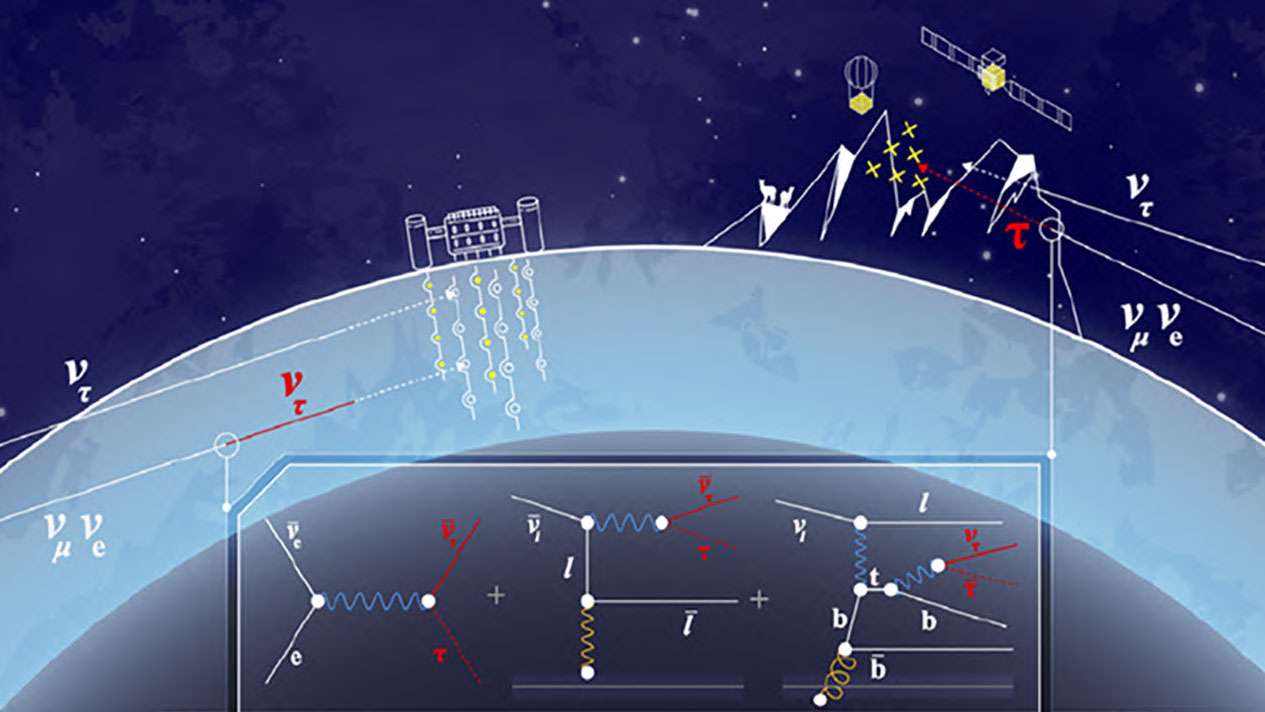A study by the Institute of Corpuscular Physics (CSIC-UV) and Harvard University shows for the first time the production of a type of neutrinos originating from extreme phenomena. The work, featured in the journal Physical Review Letters, represents a change for the models on which future Physics experiments looking for these elementary particles are based.
The detection of neutrinos to study the most extreme phenomena in the Universe is one of the most innovative fields in Physics. Here, the Corpuscular Physics Institute (IFIC) – a joint centre of the Higher Council for Scientific Research (CSIC) and the University of Valencia (UV) – and Harvard University (USA) have collaborated in a study that shows for the first time the production of a type of neutrino originating from these galactic phenomena through an unforeseen effect. Their work is on the cover of one of the most important journals in Physics, Physical Review Letters.
Neutrinos are the most abundant elementary particles in the Universe. They are also the most difficult to detect, because their properties mean that they barely interact with ordinary matter. That is why they contain a direct message from the place where they originate, in extreme phenomena of the Universe such as supernovae outbursts. Just as gravitational waves can be used to study black holes, neutrinos could be used to study these phenomena.
Several experiments aim to detect these extragalactic neutrinos, which reach Earth with energies thousands of times higher than those observed in particle accelerators such as the Large Hadron Collider (LHC) at CERN. In particular, the tauon neutrino, one of the three known types of neutrinos, is the main focus of most experiments currently being designed. This is because tauon neutrinos have properties that make them easier to detect.
In this work, Alfonso García Soto, a Marie Curie researcher at IFIC and Harvard, together with Pavel Zhelnin, Ibrahim Safa and Carlos Argüelles-Delgado – all of them researchers from the Department of Physics and the Laboratory of Particle Physics and Cosmology at Harvard University – have shown for the first time that another type of neutrino can produce tauon neutrinos when they cross the Earth, which is significant and had not been taken into account until now. In addition, they have been able to show that the next generation of experiments will be affected by this phenomenon. Therefore, experts highlight the need to design experiments that can observe not only tauon neutrinos, but also other types of neutrinos.
Positive response from the scientific community
The study of high-energy neutrinos is becoming a very attractive subject thanks to experiments such as IceCube or ANTARES. “We are receiving a very positive response from the scientific community regarding this work, since the phenomenon we have studied highlights the need to create an ecosystem of experiments if we want to understand the origin of high-energy neutrinos”, explains García Soto.
This work arises within the framework of the UNOS project, financed by European funds associated with the Marie Skłodowska-Curie Actions programme. Thanks to this project, researchers from the IFIC KM3NeT/ANTARES group and the Physics Department at Harvard University are collaborating on several studies on high-energy neutrinos.
“Seeing our work on the cover of a journal that has published for the first time many of the great discoveries in the field of Particle Physics is something very special”, says the IFIC researcher.
Reference:
Garcia Soto, P. Zhelnin, I. Safa, and C. A. Argüelles. Tau Appearance from High-Energy Neutrino Interactions. Phys. Rev. Lett. 128, 171101. DOI: https://doi.org/10.1103/PhysRevLett.128.171101


